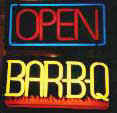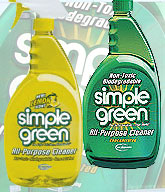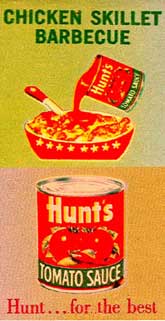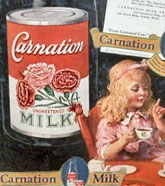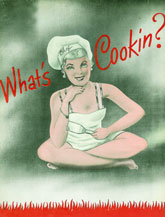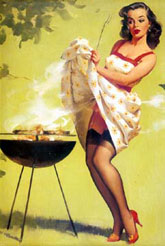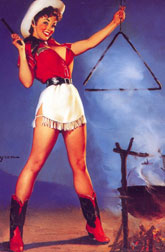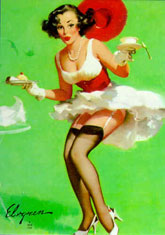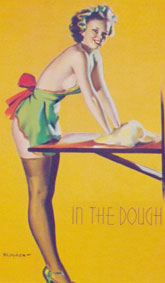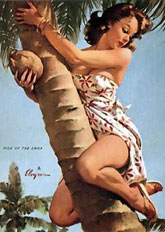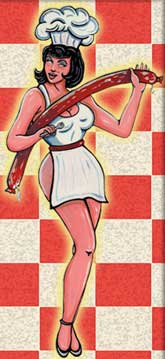Contact BBQbyDan
www.BBQDan.com
Search
KCBS BBQ Cook-Off Info
Recipes, Smoking Meats
Recipes, Grilling
|
|
||
|
BBQbyDan TURKEY
SMOKING BASICS
This is going to be a topic that is very short and simple. There is not too much to smoking a turkey that takes a lot of information or space to describe.
WEIGHT, TYPE, COST, & WHEN TO BUY I typically like to go with a Hen and have a weight of 10 - 12 pounds. However, in reality, ANY sex or weight will do fine. Just if you happen to have your preferences satisfied.
Of course Turkey tends to be a seasonal thing. I like to buy my Turkeys for under .59 cents per pound, or get them free for buying $20 worth of other supermarket groceries. That is to say around September people start to discuss Turkeys and BBQ's Galore will start putting a smoker outside their store on Saturday mornings with a turkey in it smoking all day to attract people. The subsequent holidays seem to be a time to have the basic food items we all like around that time. In my household and amongst my friends it is Prime Rib roast bone-in, Turkey, Ham, Lasagna, Pork Butt, Pork Ribs, and Brisket. The latter 3 being the least requested.
BRINE OR NOT Well that is a loaded question. There are folks out there that swear if you do not brine your bird (turkey or chicken) will not be moist. The brining effect will chemically cause the moisture to remain in the bird. Go to a brining article or watch Alton Brown on Food TV to get the specifics. I relate my own experiences as much as possible and what I will do.
I will brine every Thanksgiving Turkey I do. Now, if you asked if I benefited from it I will tell you that I honestly have never felt I have. Lets understand what we are brining for. First is taste and the other is moisture. A very basic brine will consist of enough icy water to cover your bird in a plastic or stainless bucket of some type. Needs to be icy so the bird does not grow salmonella (between 40 - 140 degrees). Which also happens to be the range that the smoke flavor enters meats that you are cooking in a smoker. Then to that amount of water I would add 1/2 - 1 cup of kosher salt and sugar (or sweetener of your choice) to balance out the salt. Then add additional herbs and seasonings to please your taste. That is what a basic brine consist of. To benefit most from it your bird needs to be in the bring for 24 hours at least. Maybe that is why I don't benefit that much from my brining as I do them for only 12 hours typically.
After the brining period is over I then pull, pat dry with paper towels so the addition of seasonings will not run off, and proceed to a normal cooking and smoking process. Maybe one of the reasons I can get away without brining and have a moist bird is that I will keep a temperature gauge in the bird the last hour or two and ensure my temperature in the thigh does not exceed 162. For me that means a very moist bird, brined or not!
And, to be quite honest I cannot always detect the taste of the herbs or seasonings I used after the bird is smoked. I will use a bunch of fresh, chopped, crushed Rosemary, Basil, Lemon zest, garlic, and onion ingredients in my brine, smells great going in the brine, coming out, and while putting on the smoker. Might catch a waft of it at the table, sometimes.
So, use your best judgment and do what pleases you reference to brining. I will continue to do so and see if I can improve my birds. After all, sometimes it is the process that is more fun than the outcome.
One last method that is very easy and makes a great product is to split the turkey in half, season, and lay both halves, skin side up, on a smoker shelf. Makes for a very nice end product, in less time, and cooked very evenly.
PREPARATION AND INJECTION I like to inject a turkey. Typically I don't however inject a chicken. For chicken you can use Teriyaki, Soy, butter, or whatever. But, it does cause what might be perceived as an unpleasant color or pockets of strong flavoring. For turkey however I like a simple solution of about 1/3 honey, 1/3 maple syrup, 1/3 butter with some garlic and onion granules or paste along with some fine pepper added to taste. The Maple syrup helps thin out the honey so it can be injected easier. Also, heat the mixture via the microwave or stove top so of course the butter will be melted but especially to get the honey to flow through the needle.
After injection I then apply my rub and put in the smoker on a vertical vented wire turkey stand. I will stand the turkey straight up on the stand, neck up, wings folded back, and that is about it. No real preparation to do other than that. Oh, don't forget to remove the giblet pack behind the neck skin. I forgot it was there once and it totally threw my cooking sequence off. My turkey just would not cook properly due to air flow problems and the temperature gauge not reading correctly. Finally I removed the turkey from the smoker and found the problem. Sliced some done breast meat for the guests, then stuck the rest in the oven to finish cooking while the guests all waited now for what was to become an overdone and dry turkey.
THE PROCESS OF SMOKING After putting the turkey in the smoker (I like to use Weber Smokey Mountain Water Smokers) on a vertical wire vented turkey stand just ensure your fire is at around 240, your water pan is full, the fire is going well, then add some nice flavoring woods like Apple, Oak, pecan, or Hickory to suit your tastes. I have found that a 10-12 pound turkey (which is the weight that I almost use) will most always come to 166-168 degrees, measured in the thigh area, in 4 hours to 4 1/2 hours ( +/- a few minutes ). I also put a small bowl, being careful not to block hot air flow through the turkey, under the turkey stand. Usually on a shelf below. This will then catch the drippings for making gravy later. However, be aware, this can be some strong stuff with the smoke flavor it has obtained.
A few things to be very aware of while smoking:
- So, in the case of the Turkey I typically baste with melted butter. While adding, or using, the captured drippings in the bowl I have placed below the bird. You might want to use a foil bowl or coat the bowl in foil so you don't have to try and get the smoke stains off.
- Every time you take the top off the smoker, or open a door, you might set your total cooking time back 15 minutes so I typically would only baste every 30 - 45 minutes once I start.
- I might very loosely cover the top half of the turkey in the last hour with a piece of foil to prevent extreme darkening if the smoking process, or woods/fuels used seems to be getting the bird extra dark. That usually does not happen.
- When determining temperature use your favorite quick-read thermometer and stick the probe down, from the top, behind the skin around the neck, through the breast, all the way down as low as you can get. Try and get down to the thigh area. NEVER penetrate the skin while doing this as if you do all juices will run out of the bird at that penetration hole and you will definitely have a dry bird. If you stay behind the skin you can try many different locations and never cause moisture loss. Remember, the turkey is standing vertical and on a stand at this time (neck up).
- The breast always will cook first. I however want to at least get the rest of the bird done while not drying out the breast and keeping them moist. So, I will typically pull my bird at 166-168 in the thigh or joint. I just will then put it in a food warmer till the rest of the dinner is ready. That can be as long as an hour or two. It will still be fine.
TRIMMING
AND SLICING
Slice it like you like. We happen to like turkey legs a lot and go for them first. If you are not going to eat it all at your current meal don't slice it all as it will dry out. Just slice what you are going to eat. I might even take the entire breast portion off the carcass the slice it. All a matter of personal preference.
TURKEY
LEGS
|
||
|
||
|

